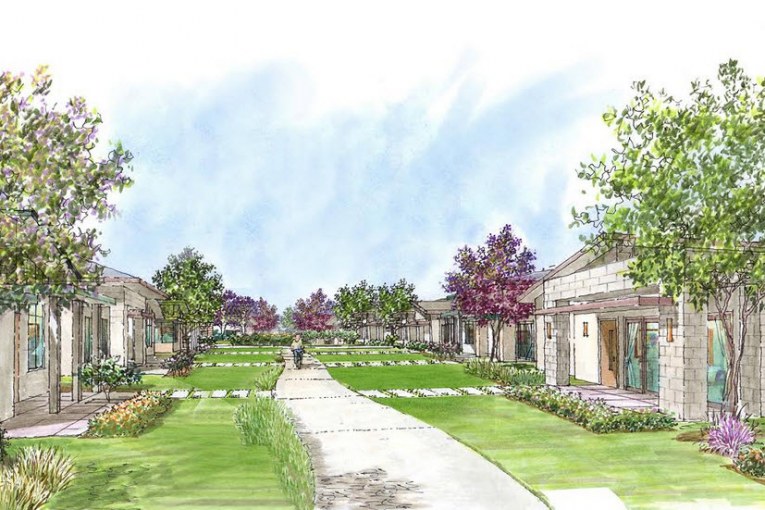

By Richard McCann
I am an energy and environmental economics consultant who works on pricing and planning issues, including on greenhouse gas emission mitigation. I am a member of the Valley Climate Action Center board, the City’s Utilities Rate Advisory Commission, and was on the Davis Community Choice Energy Advisory Committee.
I am submitting these comments as a private citizen and none of the comments are formally endorsed by any of these entities.
The Natural Resources Commission recommended to the Planning Commission that the WDAAC be required to include:
“Project’s buildings and common (public) areas should be carbon-neutral (zero net greenhouse gas) during operations.”
To facilitate achieving this standard requires “electrifying” many of the functions in a house and the NRC further recommended “Encourage microgrid-ready infrastructure throughout the community.”
The Staff’s response was: “Future energy code is anticipated to require all single-family dwellings and any apartments/condos of three or fewer stories will be required to offset 100% of anticipated electricity use through on-site production. See Development Agreement Exhibit E. The City’s Chief Building Official reports that oversizing a PV system to offset gas usage is problematic for the grid.” 
The Staff further responded: Microgrid-ready infrastructure is “(n)ot proposed at this time.”
The Planning Commission should adopt the NRC recommendations to continue moving Davis forward in reducing GHG emissions and showing the rest of the state how it can be achieved economically.
The state also set a binding goal of reducing emissions by 40% by 2030 (see https://ww2.arb.ca.gov/news/carb-approves-plan-meet-californias-bold-climate-and-air-quality-goals).
The state has a further stated goals of achieving an 80% reduction by 2050. As the state’s electricity grid decarbonizes, with a goal of 50% generated by renewables in 2030 under SB 350 (see http://www.energy.ca.gov/sb350/) plus power from non-RPS-compliant GHG emissions from buildings will largely come from burning natural gas onsite. Emissions from commercial and residential buildings were 9% of the statewide inventory (see https://www.arb.ca.gov/cc/inventory/pubs/reports/2000_2015/ghg_inventory_trends_00-15.pdf).
While residential emissions have fallen, it appears this is driven mostly by the warm winters that coincided with the extended drought. Because only 37% of emissions come from transportation and emissions from other sectors generally result from a wide range of processes that are difficult to generalize, the building sector likely will have to provide a disproportionate share of the reductions.
“Carbon-neutral” means a reduction or offset of ALL carbon emissions, including those from natural gas use for heating and cooking. On the other hand, the statewide “zero net energy” (ZNE) standard for new residential buildings beginning in 2020 focuses solely on offsetting electricity use. (See https://www.capath2zne.org/).
To displace building GHG emissions will require increased “electrification.” That means not only adding solar panels, but also on-site and community-scale storage and other distributed energy resources. The only way to achieve this standard is by networking the homes in a neighborhood through a microgrid.
Currently, PG&E is providing an electric line extension allowance for new construction of $2,431 per dwelling space. (See https://www.pge.com/tariffs/tm2/pdf/ELEC_RULES_15.pdf) In PG&E’s most recent General Rate Case filing, the average new installation cost is $1,266 per dwelling space. (Based on workpapers in A.16-06-013).
In contrast, PG&E is currently spending an average of $17,011 per dwelling replace the existing electric system in mobilehome parks. (See PG&E’s Third Annual Report in R.11-02-018.) Costs to convert overhead systems to underground in the Rule 20 program have similar costs. To install the underground portion of a microgrid now is much more cost effective than waiting after everything else has been built—it could be as much ad a 90% savings.
Carbon neutrality can also be achieved through measures beyond those that are on-site. The developers have offered to install energy efficiency measures in the existing homes of Davis residents buying in WDAAC. Their program can be modified and extended to achieve offsetting reductions across the entire City in existing buildings in a highly cost-effective manner.
To not require that the WDAAC achieve a carbon neutral standard, and skip the opportunity to make the neighborhood ready for the future is a case of being “penny wise, pound foolish.” Why face costs that are likely to be ten times higher in the future when the developer likely has sufficient overhead in the line extension allowance from PG&E to cover most the microgrid-ready costs today? Please adopt the NRC’s recommendations.
Richard McCann is a member of URAC and a resident of Davis.
